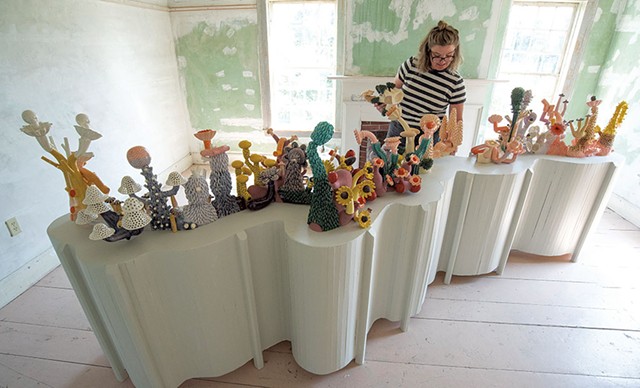
- Jeb Wallace-Brodeur
- Megan Bogonovich installing her work
Kents Corner State Historic Site in Calais is a picture-perfect Vermont setting: a 19th-century brick tavern with four chimneys, a weathered barn, rolling hills and a 200-year-old wooden church within walking distance up the dirt road. Not exactly what most people imagine when they think of contemporary art.
Yet every September for 17 years, curators Cornelia Emlen, Allyson Evans and Vermont state curator David Schutz, all residents of Kents Corner, have assembled one of the most anticipated shows on the calendar. They have done it again with "Illuminated Worlds," on view Fridays, Saturdays and Sundays through October 6. It features dozens of works by 24 Vermont artists, none of whom have shown at the Kent before.
In choosing this year's theme, the curators initially thought about books, Emlen said. A common suggestion they received was climate change, a dauntingly large topic for a largely volunteer-run effort. Then they visited Norwich book artist Stephanie Wolff, who talked to them about illuminated manuscripts. "The word 'illuminated' kept coming up with different people," Emlen said, "which got us really excited, thinking about the intersection of books and weather and all these different threads."
Wolff's own works in the show include delicate artist books such as "Of the Air," featuring approximately inch-square watercolor paintings of the sky with printed descriptors: "Tolerably cold," "Excessively warm," "Arcadian." Those terms come from entries in a 19th-century woman's diary, which Wolff also presents as embroidered text on a series of linen "pages," illuminated with tiny quilt squares.
This work's treatment of the weather as both quotidian and vital is an undercurrent running through the show. Weather is even embedded in the historic building: Penciled graffiti in one of the upstairs rooms reads, "Jan 18 — 1913, PM — rains hard no snow nor has there been enough for sledding, road's all ice."
Like blown-up versions of the skies in Wolff's book, Michael Abrams' paintings are tangibly humid. "Walking Clouds," five feet high, meets visitors as they enter the gallery and presents a deep azure sky over a hazy suggestion of landscape. Unlike Wolff's minute descriptions, Abrams' weather engulfs the viewer.
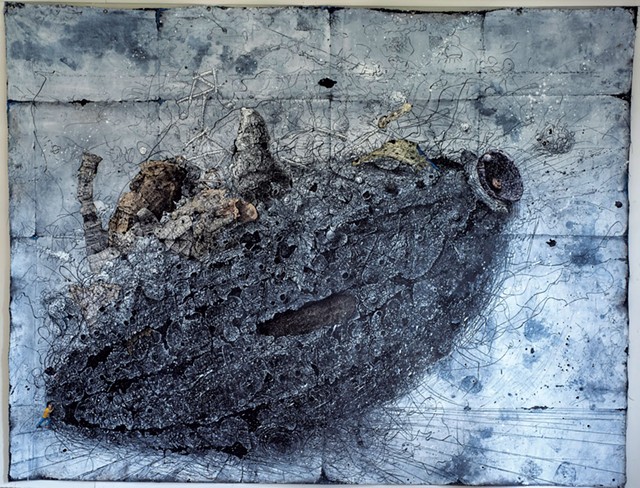
- Jeb Wallace-Brodeur
- "Dithering Machines" by Gerry Bergstein
On the opposite wall, "Torn Curtain," a 50-by-120-inch work by Gerry Bergstein, presents a different kind of sublime. On grommeted, pasted-together paper, a tornado of swirling black lines describes a galaxy-level apocalypse. Ultramarine blue peeks through apparent tears, as does a drawing of the universe. The occasional disintegrating duomo-like building spirals off into space, and a couple of tiny construction guys can be seen just hanging out at what looks to be the end of time.
Bergstein has a number of works in the show, including the wall-size "Dithering Machines". It's on the second floor, in one of two rooms over the former general store that are easy for visitors to miss but well worth seeing. Misoo Bang's "Giantess" paintings, each three by four feet, loom powerful and large there, near Sabine Likhite's spiky, deliciously dangerous-looking sculptures. Valerie Hird's interactive works are like miniature stage sets made from books. They light up when the viewer turns a crank — perhaps the most literal interpretation of the show's theme.
Unlike a white-cube gallery, the Kent offers its curators a challenging setting: many small rooms, low ceilings, plaster-and-lath walls (sometimes sans plaster), vintage wallpaper, steep stairs, and limited lighting. What makes the Kent show so fun is exploring and finding works that harmonize with these circumstances.
Take Megan Bogonovich's 12-foot-long ceramic installation, which has taken over a little mint green-and-pink room upstairs. It's like an unnatural coral reef where a mass of creatures waggles bright-hued alien appendages, popping with occasional gold glaze. One creature is reminiscent of an old phone receiver; others, of plastic sunflowers.
Installing her work, the artist said she is fascinated by the nature-adjacent: "the spot on my road where the tree's been cut a bunch of times to accommodate the power line, or when the field has marshmallows of hay in it. I'm interested in where the human stuff and the plant stuff kind of hang out."
Cameron Davis' unusual palette — incorporating gold, teal and pink, yet murky and mysterious — also complements the venue surprisingly well. She contributed many large paintings to the show, including "In the Garden," a 10-by-5-foot painting on three panels. It foregrounds a lush tangle of weeds, backlit by shimmery gold. Outside, Davis has installed "Waxwing Medicine," diaphanous painted fabric in a stand of cedars that captures the late-afternoon glow to similar effect.

- Alice Dodge
- "Herbaria" by Adrienne Ginter
The curators thoughtfully balance works of different scale. Large, boldly geometric cut-paper works by Warren architect John Anderson share space with Brattleboro artist Adrienne Ginter's tiny, organic sculptures of paper curls. She makes these with discarded bits from her little cut-paper worlds, also on view.
Discards and detritus inspired "Plastic Polyps," Rebecca Schwarz's installation in an attic space. Viewers peek into a cave of plastic sheets and packaging, lit from within and animated by a fan. It's hauntingly beautiful, even if made of trash.
Photographer Li Shen uses light sparingly in her rich still lifes, each featuring books. In the 13-by-19-inch print "Coral Fungus," the forest floor consumes a guide to fungi. A forager herself, Shen said last year's wet weather made it a great year for mushrooms. Though she created the still life in her Thetford basement, it looks like a 17th-century Dutch painting, full of dense shadow and dramatic chiaroscuro.
Outside the building, Nancy Winship Milliken reverses that vision of still life. "The Memory of Nature" is an accumulation of driftwood and plants coated in bright white limestone, like sun-bleached bones.
"It talks a bit about geological time," Winship Milliken explained of the piece, in which she imagined pollinator habitat that water has worn down into coral over the years. Inside, her sculpture "River Snag" is related to a larger work about Vermont's recent flooding that the artist will permanently install on Main Street in Burlington.
In another outdoor piece, this one interactive, Winship Milliken invites viewers to "listen to nature" and press words of response into a tray of sand.
Members of the Art at the Kent team have created their own interactive piece this year, collaborating with book artist Wolff and local designer Syver Rogstad on the outdoor project "Skyview." Looking through a volvelle, visitors match the color of the sky to icons and words.
It's an apt concept for the show: a poetic, decadently inventive way of looking at the world, in any weather.
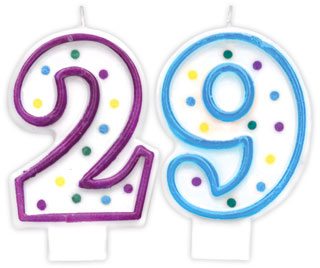
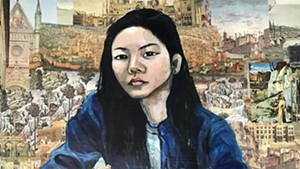





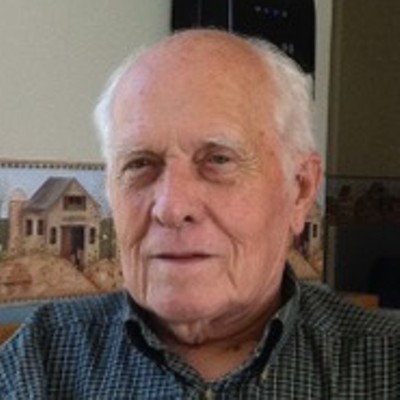
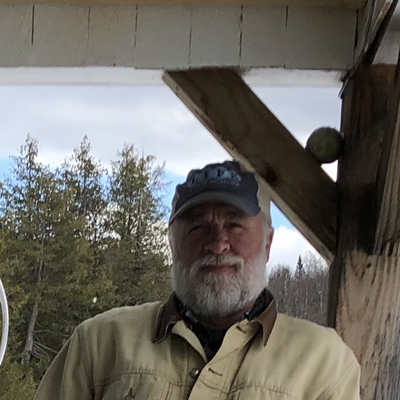
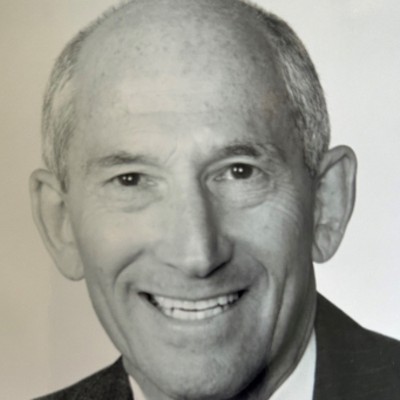
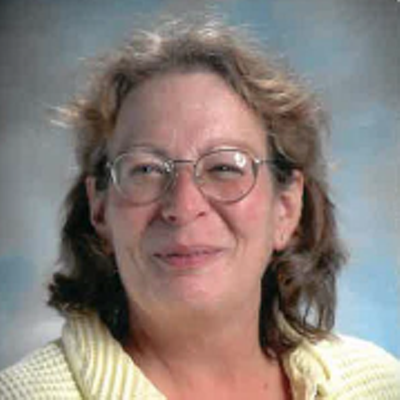
Comments
Comments are closed.
From 2014-2020, Seven Days allowed readers to comment on all stories posted on our website. While we've appreciated the suggestions and insights, right now Seven Days is prioritizing our core mission — producing high-quality, responsible local journalism — over moderating online debates between readers.
To criticize, correct or praise our reporting, please send us a letter to the editor or send us a tip. We’ll check it out and report the results.
Online comments may return when we have better tech tools for managing them. Thanks for reading.